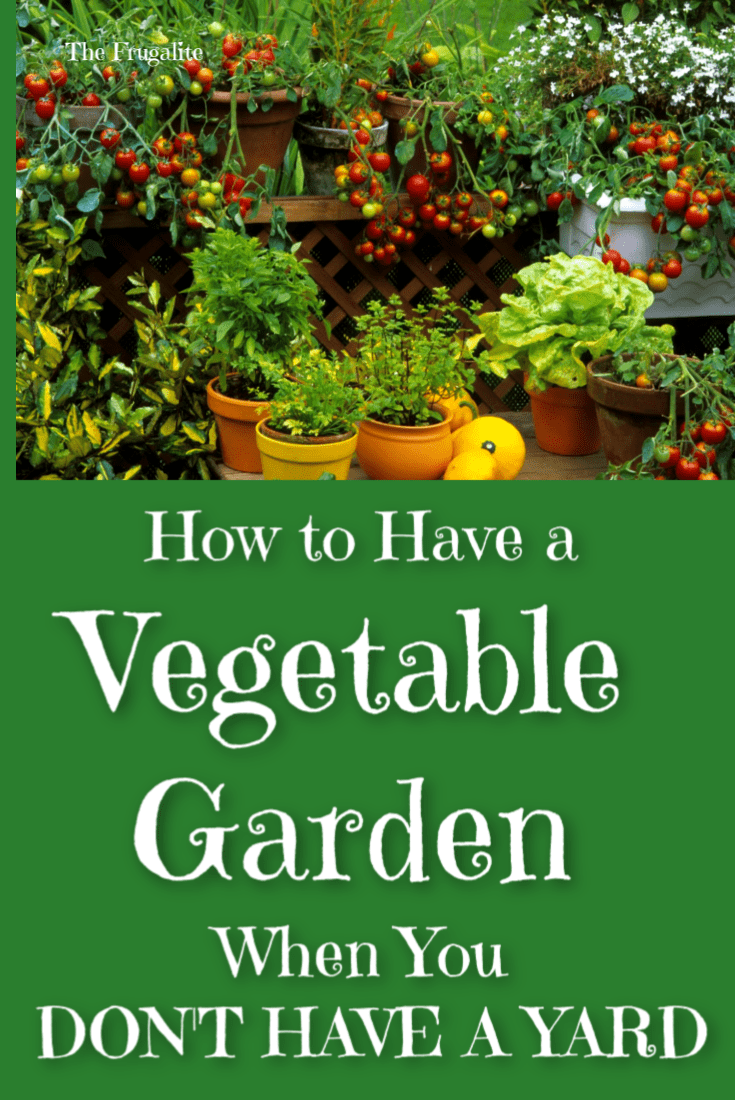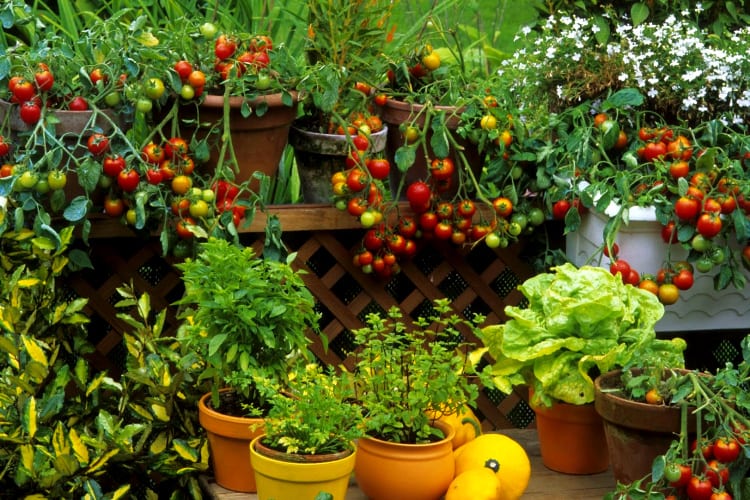(Psst: The FTC wants me to remind you that this website contains affiliate links. That means if you make a purchase from a link you click on, I might receive a small commission. This does not increase the price you’ll pay for that item nor does it decrease the awesomeness of the item. ~ Daisy)
Not everyone lives someplace with a big backyard or acreage. So, if you have the itch to grow your own garden-fresh vegetables, what can you do if you’re an apartment dweller?
Here are some tips to help you produce food, no matter where you live.
Balcony/Patio gardening
If you have a balcony or small patio, load it up with veggies. These vegetables grow well in containers:
- Tomatoes
- Bell peppers
- Radishes
- Greens
- Bush beans
- Peas
- Zucchini
Note that you will need the proper support for plants that get tall or climb.
Growing food indoors
Maybe you don’t have any outdoor space. There are several things you can grow indoors to cut your food bill.
- Fresh herbs
- Microgreens
- Spinach
- Sprouts
- Green onions
- Mushrooms (look for those sprouting logs)
- Ginger
If you really want to get into growing food indoors, you can invest in (or build) a hydroponics set-up, but those can be pricey.
Another way anyone can add fresh greens to supplement the grocery budget is to start sprouting. This website has the best information for beginners to join the wonderful world of sprouting.
Look for a community garden
Many cities now are turning abandoned lots into gardens for the community. You are assigned a little plot and can grow whatever you want in it. If times are really tight in your area, you may find that your garden patch is not safe from hungry people. It’s a great idea if your food remains there for you. Some community gardens even have swap meets so gardeners can trade their surplus veggies for someone else’s surplus veggies. Bonus: It’s a great way to meet other people who have a self-reliant mindset.
Go to the roof
If your building has a rooftop, you may be able to persuade the other residents to turn it into a container garden space. Remember that rooftop gardens are very sunny and usually don’t have any shade, so choose your plants accordingly. Be sure that there is a way to access water on the roof or you’ll be lugging buckets up the stairs. No matter how good your intentions are, there will come a point in which you just stop watering your plants and they’ll die.
It requires dedication.
Gardening without a yard isn’t easy. It will require discipline and dedication. But if you really want to jump on board the backyard veggie train, you’ll find a way!












3 thoughts on “How to Have a Vegetable Garden When You Don’t Have a Yard”
Plastic buckets can make decent planting beds and can be cheap or even free. Even if you have to buy them, they are lots cheaper than buying pots. Drill holes in the bottom for drainage and place over a drip tray – you could use old sheet pans or oil-change drip pans for that. If you ask nicely at fast food restaurants, you can still sometimes get free buckets that used to contain things like mayonnaise. Those are also good for pickling or making sauerkraut since they are food grade. If you want to get fancy you could even use a plastic-safe spray paint on the outside. (Now I’m hungry for sauerkraut.)
https://kratky.weebly.com/
Update on growing things indoors! Along with sprouting, growing herbs, and various other standard indoor gardening, I’ve now grown tomatoes inside. You can grow tomatoes and peppers in pots with the right variety! The tomatoes I grew were a “yellow hat micro” tomato I got from Baker Creek Heirloom Seeds. The cool thing about heirloom seeds is you can save seeds from them, so if you pay four bucks for a packet, that’s basically the last packet you have to buy because you can save the seed every year. Good for a frugal gardener.
Anyway my “yellow hat micro” tomatoes weren’t really good for more than a salad because they are like super tiny cherry tomatoes, but they were still fairly abundant and fun to watch in my office window. Funnily enough I grew tobacco recently, started from seed, and it got surprisingly large inside my house. I needed to transplant it outside but it would have theoretically been smokeable even in that state.